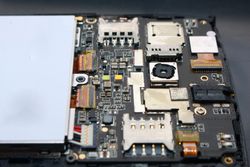
As smartphones become more prevalent and new models come out every year, the need for smartphone recycling has developed. Unfortunately, obsolete devices that are left unused or thrown away can result in potentially toxic waste piling in landfills and contaminating the ecosystem. Below are a few strategies to tackle this problem.
A Guide to Smartphone Recycling
Can You Re-Use Salvageable Parts?
Most recycling processes use reverse engineering, applying the process on most electronic devices, including mobile phones. As the name implies, the method reverses the original production process, isolating different parts and sections of the phone.
 After prying apart individual metal and plastic pieces, the recycling factory will try to salvage the working parts and combine them with other ones from different phones to make one complete device. They will send the rebuilt phone back into circulation— without needing to use any more natural resources.
After prying apart individual metal and plastic pieces, the recycling factory will try to salvage the working parts and combine them with other ones from different phones to make one complete device. They will send the rebuilt phone back into circulation— without needing to use any more natural resources.
How Does Smelting & Extracting Valuable Metals Work?
Apart from re-using recoverable parts, another smartphone recycling method is to meltdown and separate different components of the phone, extracting valuable natural resources. This process can take months from start to finish, recovering various quantities of pure silver, gold, palladium, platinum, and rhodium.
These metals are all precious and can be harder to find in today’s world. The process leaves behind tiny amounts of steel and aluminum, which can be reused for other devices. The final step is to extract the left-out glass and plastic to use in other recycling projects.
If you have an old phone lying around, reach out to Evage Electronic Recycling in Boone County, AR. As a certified recycling center, specializing in old electronics, such as smartphones, batteries, as well as large and small appliances, they will handle your device with care. They provide pickup service for any appliance, so call (870) 416-2294 today to schedule a visit or arrange a pickup.
About the Business
Have a question? Ask the experts!
Send your question

